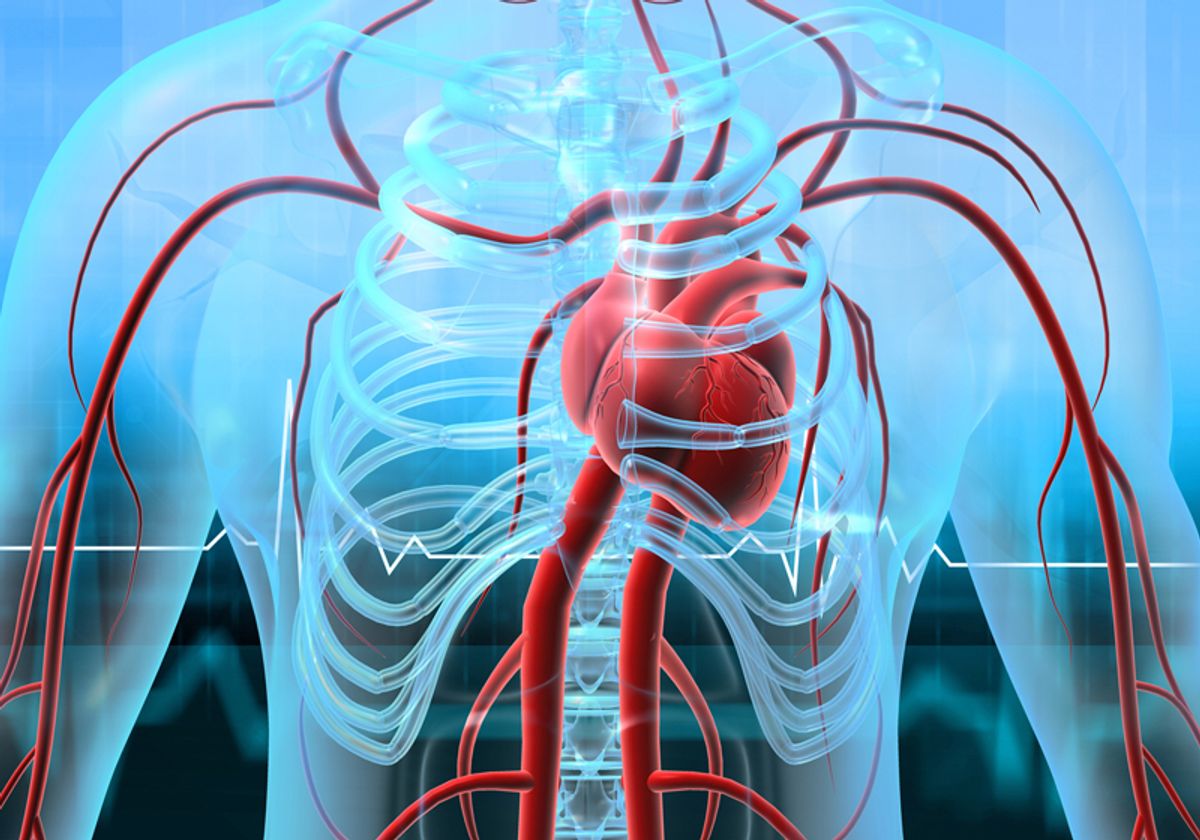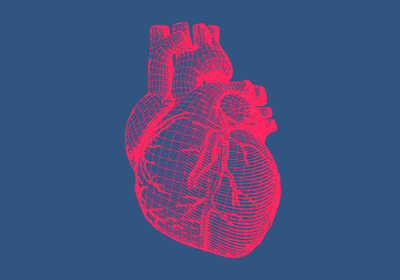ABOVE: New RNAi therapeutics pave the way for innovative cardiovascular disease treatments. ©istock, Jolygon
Cardiovascular disease (CVD) is the leading cause of death globally, and combating this range of complex disorders presents numerous challenges. Scientists seek innovative approaches to address this health crisis, some of which are therapeutics poised to treat CVD in new ways.
RNA interference (RNAi) therapeutics silence genes, disrupting the production of proteins that contribute to disease. Scientists at Alnylam Pharmaceuticals have developed and are testing multiple RNAi drugs for different forms of CVD. In this Innovation Spotlight, Kevin Fitzgerald, chief scientific officer at Alnylam Pharmaceuticals, discusses the RNAi approach to CVD treatment, recent clinical trial results, and the company’s present and future endeavors in this emerging therapeutic space.

Chief Scientific Officer
Alnylam Pharmaceuticals
Why are new approaches needed to combat CVD?
Despite available treatments, CVD remains the leading cause of death in the world and is a major concern for many families, including my own. New approaches are needed to address the risk factors for heart attack, stroke, and other major cardiovascular events. RNAi technology, because of the way it works, has the potential to disrupt the treatment of CVD risk factors and help millions of patients.
Which diseases in particular does Alnylam focus on?
We’re focused on areas of high unmet medical need, including CVD, where we’re making exciting progress. Take high LDL cholesterol as an example. An Alnylam-discovered RNAi therapeutic that is licensed to Novartis is already approved to treat high cholesterol in certain patients.
We are developing an investigational RNAi therapeutic in collaboration with Roche for hypertension, or high blood pressure. Despite the daily medications that are out there for it, high blood pressure remains uncontrolled in many patients. We aim to bring down blood pressure and then hold it nice and steady both day and night with an injection that is given every three or six months.
In addition, we are exploring RNAi therapeutics for type 2 diabetes and obesity, which are also major CVD risk factors. For example, we have an insulin sensitizer in preclinical testing for type 2 diabetes.
I should mention that we recently reported positive results for a phase 3 clinical trial of an investigational RNAi therapeutic in development for the cardiomyopathy of transthyretin amyloidosis (ATTR-CM).1 This adds to our confidence that RNAi therapeutics have enormous potential in the cardiometabolic space.
How do RNAi therapeutics work and how are they administered to patients?
Five of the six approved RNAi therapeutics are administered subcutaneously. They are injected just under the skin and travel to the liver, where they enter liver cells and engage the naturally occurring process of RNA interference to disrupt the production of specific proteins before they are made. I want to emphasize that they work upstream of standard medicines, which generally target proteins. RNAi therapeutics target and destroy mRNA the step before a protein is made.
Also, we’re taking advantage of endogenous machinery that is present in every cell of the body. In theory, we could design a small interfering RNA (siRNA)—the active ingredient in an RNAi therapeutic—to target and degrade any mRNA. In other words, we could silence virtually any gene in the genome. We’re working on new delivery systems for RNAi therapeutics to move beyond liver cells to tissue such as adipose and muscle—all relevant for CVD—and unleash the full potential of this technology.
How can RNAi technology specifically benefit patients with different types of CVD? How do these therapies measure up to more conventional drugs?

Patients are often on multiple therapies to try to manage their CVD, and standard medications meant to address CVD risk factors have some drawbacks. They generally work after problematic proteins that cause or contribute to disease have been made, and they require regular, often daily, dosing. People aren’t always very good about taking their medications, especially for something such as high cholesterol, a condition that you don’t feel every day. CVD is often silent until you have a heart attack or stroke.
As I mentioned, RNAi therapeutics work at the level of mRNA, acting before proteins are made. And RNAi therapeutics can reduce the levels of unwanted proteins for extended periods, which means that they can be administered infrequently—every three or six months, for example. In addition, treatment with RNAi therapeutics consistently maintains low levels of unwanted proteins, which is especially important for blood pressure control. The effects of traditional, daily pills for hypertension ebb and flow over the course of a 24-hour day. RNAi also has the ability to go after disease targets that are undruggable by small molecule or antibody therapeutics.
What were you hoping to learn from the RNAi therapeutic trial for patients with ATTR-CM and what were some of the most exciting results?
ATTR is a progressive, debilitating, and fatal disease caused by misfolded transthyretin (TTR) proteins, which accumulate as amyloid deposits in various parts of the body, including the nerves and heart. Patients may present with polyneuropathy (PN), cardiomyopathy (CM), or both manifestations of disease. Vutrisiran is an RNAi therapeutic that delivers rapid knockdown of mutant and wild?type TTR, addressing the underlying cause of the disease. It is approved for the treatment of the polyneuropathy of hereditary transthyretin-mediated amyloidosis (hATTR-PN) in adults.
HELIOS-B was a phase 3 study designed to evaluate the efficacy and safety of vutrisiran on the reduction of all-cause mortality and recurrent cardiovascular events in patients with ATTR-CM. It included patients on available standard of care treatments as well as monotherapy patients who only received vutrisiran. The study met all 10 of its primary and secondary endpoints, across both the overall and monotherapy populations, with statistical significance. Strikingly, treatment with vutrisiran substantially reduced the risk of death and cardiovascular events relative to placebo.
What are the next steps for Alnylam in terms of RNAi therapeutics for CVD?
We’re obviously excited about vutrisiran as a potential treatment for ATTR-CM and have filed for marketing approval in the United States and European Union. We are also advancing an expanding portfolio of investigational RNAi therapeutics for cardiometabolic disease, including our potential treatment for hypertension. And we’re working to unlock tissue such as adipose and muscle with new delivery technology.
In parallel, we’re thinking about combinations of RNAi therapeutics. Over the long term, we might be able to address multiple CVD risk factors with a single shot of RNAi therapeutics—or a single RNAi therapeutic designed to hit multiple targets—that’s administered a couple of times a year. Think of it like a vaccine-type schedule of administration for the prevention of major cardiovascular events.
What developments in the RNAi therapeutics field excite you the most?
One area I'm particularly excited about that I haven’t mentioned yet is our work in the central nervous system (CNS). We have found a way to deliver RNAi therapeutics to human brain cells, and we’re applying our new delivery system to multiple targets and diseases. For example, we have an investigational RNAi therapeutic that targets amyloid precursor protein (APP) in development for early-onset Alzheimer’s disease and cerebral amyloid angiopathy. Another notable target is alpha-synuclein, a protein associated with Parkinson's disease, which has personal meaning to me because the disease has affected my family. RNAi therapeutics are poised to disrupt multiple therapeutic areas. They represent hope for many patients and their families.

- Fontana M, et al. Vutrisiran in patients with transthyretin amyloidosis with cardiomyopathy. NEJM. 2024;0(0).

